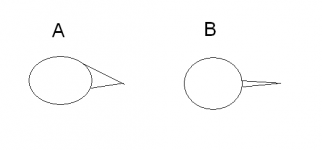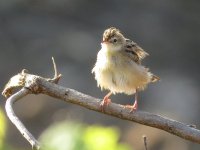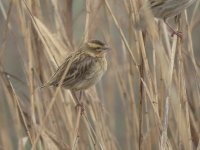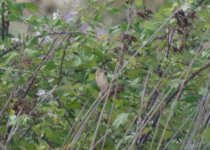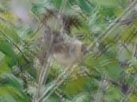I'm simply having trouble getting started on these two songbirds:
(1) one with a small, high pale bill and dark crown, vaguely reminiscent of North American Ammodramus sparrows: https://www.flickr.com/photos/eliotc/14339764704/. Pale Rock Sparrow perhaps? Location is Parque Ornitológico de Arrocampo near Saucedilla, Extremadura, Spain. Date is May 30. It was in plants adjacent to the reservoir.
(2) Also, a small large-eyed, thin-billed character perched on a barbed-wire fence in the steppes. https://www.flickr.com/photos/eliotc/14360977663/
Neither is a great photo, but maybe someone can offer a lead. Thanks for your help.
(1) one with a small, high pale bill and dark crown, vaguely reminiscent of North American Ammodramus sparrows: https://www.flickr.com/photos/eliotc/14339764704/. Pale Rock Sparrow perhaps? Location is Parque Ornitológico de Arrocampo near Saucedilla, Extremadura, Spain. Date is May 30. It was in plants adjacent to the reservoir.
(2) Also, a small large-eyed, thin-billed character perched on a barbed-wire fence in the steppes. https://www.flickr.com/photos/eliotc/14360977663/
Neither is a great photo, but maybe someone can offer a lead. Thanks for your help.
Last edited:







